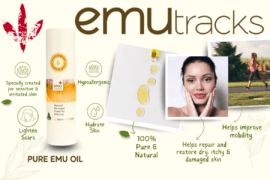By Sarah Palmer
This blog post will be all about swaddling, from a baby-led perspective.
Let’s start off by talking about the startle reflex.
Also known as the Moro reflex, it’s a ‘primitive’ instinct that babies are born with – a survival impulse designed to filter out sensory information. The arms swing up and out in order to reach out for the caregiver, and then the arms go down into a crossed position to pull them close. This reflex movement is a primitive fight or flight reaction. It’s a neurological response that comes from baby’s brain stem – therefore it’s not something you can stop from happening – you can’t change biology. It’s basic survival 101 from a baby’s primitive instincts: keep my caregiver close!
As a neurological response it’s building neural pathways in your baby’s brain and helping them to process information that is coming into their brain and how their body responds to that information.
As with all reflexes, the startle reflex will go away naturally. If allowed to integrate naturally (by allowing the reflex to occur and not trying to stop it), this typically happens in the first 3-4 months of life.
If you’re using a swaddle for your baby, here are some tips on transitioning out of it when the time comes.
As with all reflexes, the startle reflex will go away naturally. If allowed to integrate naturally (by allowing the reflex to occur and not trying to stop it), this typically happens in the first 3-4 months of life.
How do you know when to stop swaddling?
- You’re constantly getting up to re-do the swaddle.
- Baby is fighting the swaddle and getting their hands free. Or you’re saying something like, “my baby hates the swaddle”.
- They show any signs of rolling – this is SO important to stop swaddling once baby is showing signs that they may roll over. If they roll over and are swaddled, their hands and body are restricted and they may not be able to manoeuvre themselves into a safe position if their airway becomes compromised.
- You also don’t have to wait until some arbitrary time to stop swaddling – if you don’t want to do it anymore, you don’t have to!
- Please also note that if you are bedsharing, DO NOT swaddle your baby while bedsharing.
…this is SO important to stop swaddling once baby is showing signs that they may roll over.
How do you transition baby out of the swaddle?
- Start to loosen it over the course of a few days – swaddling less tightly each day. Once it is loose enough for them to completely break free and wriggle around, change over to a safe sleep sack/sleeping bag so that there are no loose swaddles/blankets in with them.
- Try unswaddling one arm at a time. Do a few days with one arm swaddled, then free the second arm and just wrap the swaddle around the body. Then move to a safe sleep sack/sleeping bag.
- Cold turkey – just stop swaddling. Expect more wakes for a few nights and prepare support for yourself so that you can cope with more sleep deprivation.
- Reach out for some support! If you’re really worried about transitioning out of the swaddle or are trying it and struggling, get in touch and I can support you through the process.
What if I don’t swaddle my baby?
Did you know that you actually don’t need to?
Here are some reasons why, as a Baby-Led Sleep and Well-Being Specialist, I actually don’t recommend swaddling babies.
- Babies need their hands free for breastfeeding – their hands on mum’s breast/body helps produce oxytocin (cue milk production!) and helps baby to latch well (for proper attachment, they essentially have to be hugging the breast). Constantly swaddling and unswaddling for each feed is disruptive and overall, results in less sleep for all!
- If done incorrectly, swaddling can increase the risk of hip dysplasia – so please if you are swaddling make sure that you are not wrapping the hips and legs tightly. There is also a risk of baby overheating (which is a risk factor for SIDS) because the enclosed nature of the swaddle may impact temperature regulation. As such, choose fabrics for swaddling (and the clothing layers underneath) which are breathable – natural fibres such as cotton are best and we recommend avoiding fleece











